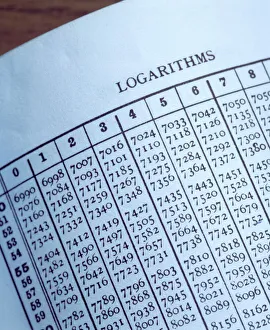Logarithms Collection
"Unveiling the Mathematical Marvel: Logarithms" Discover the fascinating world of logarithms, a mathematical concept that revolutionized calculations
All Professionally Made to Order for Quick Shipping
"Unveiling the Mathematical Marvel: Logarithms" Discover the fascinating world of logarithms, a mathematical concept that revolutionized calculations. From ancient times to modern advancements, they have played a pivotal role in various fields. 🧮 Step back in time and explore the origins with the Logarithm table, an invaluable tool used for complex computations since its creation. 📚 Did you know that Spanish architect Benito Bails contributed to mathematics? His work "Elementos de Matematica" sheds light on logarithmic principles and their applications in architecture and engineering. 🏛️ Before calculators ruled supreme, mathematicians relied on instruments like the Tubular Slide Rule to perform intricate calculations efficiently. It was through these devices that logarithmic functions found practical use in everyday life. ⚙️ Meet John Napier, the brilliant mind behind this groundbreaking concept. As depicted in engravings such as "John Napier of Merchiston, Inventor of Logarithms, " his contributions forever changed mathematics by simplifying complex arithmetic operations into manageable steps. 🔬✨ Johannes Kepler's masterpiece "The Rudolphine Tables" showcases how logarithmic tables were integrated into astronomical calculations during the Renaissance era – paving the way for precise celestial observations and discoveries about our universe's mysteries. ✨🌌 Delve deeper into John Napier's life through captivating engravings like "John Napier (Stewart)" or "John Napier Of Merchiston. " This Scottish polymath not only excelled in mathematics but also made significant strides as a physicist, astronomer, and astrologer – leaving an indelible mark on scientific history.















